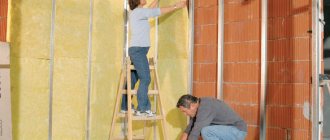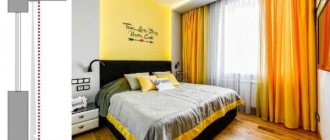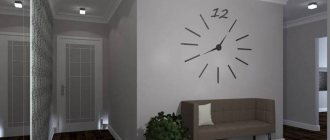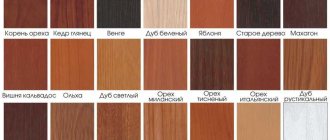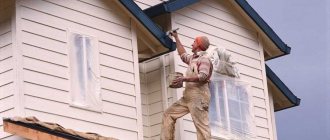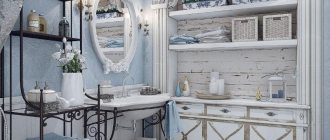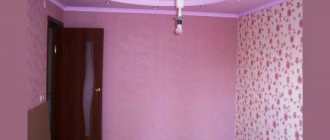Of primary importance when building a wooden house is the quality of the wood used. The choice of wood for building a house should be approached very carefully. Properly selected and applied in accordance with the manufacturer’s recommendations, facade paints, antiseptics, and wood glazes will effectively protect a wooden house from precipitation and UV, and keep it in excellent condition for many years.
Now it’s the 21st century and wood as a construction material is experiencing another surge in popularity. The craving for naturalness and natural materials is understandable. But it is not enough to build a wooden house or cottage, you need to provide them with proper care, and in order for the wood to last a long time and not lose its attractiveness, the house needs to be painted. When builders guarantee that a wooden building will last a hundred years, they mean its timely and correct protection from destruction.
Harmoniously selected color when painting a house
Why you need to protect a tree
Professional builders recommend painting a wooden house right away so that it lasts longer. Unprotected wood is negatively affected by almost all environmental factors. If a living tree is covered with bark, then only painting will protect the logs or boards.
- Exposed wood is destroyed by exposure to the sun's rays. Ultraviolet radiation affects lignin, a substance responsible for the lignification of plant cells. As a result, the wood darkens, becomes loose and damp. A fundamental change in the material occurs after six months of being in the open air. Since painting a wooden house over a damaged surface layer will not bring the desired result, you must first sand the surface to an undamaged material.
The logs of the log house dry out and crack over time.
Under the influence of ultraviolet radiation and temperature changes, the boards darkened and cracked
The cracked end of a log
- The alternation of rain and dry weather causes the wood to periodically swell and dry out unevenly. The result of the process is cracks of varying depths, which gradually increase. The house becomes unsightly and its ability to retain heat decreases. In addition, mold fungi settle in the cracks and rotting begins.
- Temperature changes in winter lead to moisture entering the pores of the wood during the thaw and then freezing. Ice crystals can tear wood fibers, forming cracks in the depths. Repeated repetition threatens that cracks will spread not only on the surface, but throughout the entire thickness of the frame.
Exterior painting of a wooden house creates a protective layer that serves as a barrier to negative influences.
Types of paints
The abundance of modern paints and varnishes provides various options for solving the problem of how to paint the outside of a wooden house. All types of exterior or facade paint are divided into:
- glaze, i.e. translucent, preserving the appearance and texture of wood, having antiseptic properties;
- covering paints are oil, acrylic and alkyd paints that form an additional layer on top of the wood.
Types of paints and their differences in composition
Materials differ in composition, drying speed, appearance and other characteristics. Experts have not come to a clear conclusion about which paint is best to paint the outside of wooden houses, so you need to choose taking into account the wood from which the house is built (dry, damp, treated, old, etc.) and the climatic features of the area.
When choosing high-quality products, the preservation of wood is ensured for up to 15 years. Such a long-lasting and reliable effect can only be achieved by following the rules of painting and preliminary preparation.
Painting wooden walls inside the house, price
There are costs associated with any construction work. Painting jobs are no exception. Painting wooden walls inside a house, the price of which is determined by the owner, should also determine the choice of materials. If a budget repair is proposed, you will have to choose between price and quality. You will have to give up expensive acrylic paints and antiseptics.
If painting wooden walls inside a house, the price of which is minimally limited by financial support, then the selection of materials and paints is made from a wider range of quality. Expensive primers and coatings will give interior decoration more detailed results.
But a third option is also possible, in which painting wooden walls inside the house will be used selectively. This solution is most acceptable only if you do all or most of the work yourself.
Wood pre-treatment
In order for the paint to apply smoothly, absorb well and last a long time, you need to prepare the surface for painting. Before treating the outside of a wooden house with any compound, antiseptic or fireproof, it is necessary to level the surface and seal the cracks.
After finishing the construction of the house, it is necessary to seal the joints and putty the cracks
The main condition is that the wood must be dry with a moisture level of no more than 20%, so preparation begins in the dry and warm season. If you put paint on a wet surface, the internal moisture will evaporate and destroy the coating and tear it away from the base.
The dry surface is cleaned of dust and dirt. If stains and stains of resin are difficult to remove, you can use a solvent. It is advisable to sand wood that was previously exposed to the open air mechanically.
After sanding, painting is carried out within 48 hours to ensure that the maximum effect of sanding is preserved.
First, the surface is treated with antiseptic primers or wood impregnations. Sometimes builders take on this work, but they often use the cheapest compounds - not very effective for preserving wood and environmentally unsafe. It is recommended to use water-based antiseptics that protect against the formation of mold, mildew and other biological formations on wood.
Antiseptics for wood
The application of antiseptics is carried out in strict accordance with the instructions indicated on the packaging. You cannot process at subzero temperatures, even if manufacturers offer winter antiseptics.
The better to paint
Paint for the facade of a wooden house can be translucent, glossy or matte. Since the natural look of wood is most attractive, glazing facade materials, which are available in the form of antiseptics, glazes or oils, are very popular.
The peculiarity of these materials is that they do not hide the structure of the wood. The materials work as impregnations, penetrate deep and create a barrier to getting wet or exposed to ultraviolet rays (UV). Despite their transparency, glaze paints are available in a wide range of colors. The most famous manufacturers:
- Renocoll (Rhenocoll) Germany.
- Teknos Finland.
If there is a desire to hide the surface of the wood, then use façade covering paints, which are divided into:
- oil - made from oils of natural origin and organic solvents;
- alkyd - produced in organic solvents or aqueous solutions of alkyds;
- acrylate (acrylic) coatings - based on acrylic and copolymers (latex, vinyl, silicone).
These paints form an opaque protective film that completely hides the wood grain. Over time, they oxidize, cease to be elastic and crack. Subsequently, the top layer turns into a powdery white substance (paint chalking process). After a few years, the layer will need to be removed completely or partially and the work done again.
Acrylic paints are more expensive and have a high degree of elasticity.
Well-known manufacturers of covering paints:
- Tikkurila (Finland).
- Alpina (Germany).
- Dufa (Germany).
- Beckers (Sweden).
- Dulux (Netherlands).
- Marshall (Türkiye).
Facade acrylic paint Dulux
Tikkurila paints are well known among us
Impregnation for the protection of wooden surfaces from Dufa
Among the Russian brands, the most popular are “Optimist”, “Svyatozar”, “Tex”, “Yaroslavskie Krasny”.
Average paint service life:
- glazing antiseptics – 5 years;
- acrylic – 8–10 years;
- oil – up to 6 years;
- alkyd materials – 7 years.
When comparing different types of paint, consider their pros and cons:
- oil paints – have a high penetrating ability, reliably protect against moisture, but dry slowly (several days depending on the temperature), which is sometimes unacceptable for outdoor work;
- alkyd compositions - have good frost resistance, but crack over time under the influence of UV;
- acrylic - convenient and easy to use, odorless, do not lose color, a new shade is easily obtained by mixing white paint with colorants (colored dyes), but if the house is painted with acrylic paint, then in the future you can only use them.
In recent years, acrylic paints and varnishes have taken a leading place, despite their higher price. Considering how much it costs to paint a wooden house and the effort it requires, it is not advisable to focus on cheap types. It’s better to do it well once than in 2-3 years the house will look sloppy. Immediately choose how to paint the outside of a private house or cottage for a long time , even if you have to invest more.
The total cost of painting depends mainly on the size of the house. This amount will include the cost of antiseptic, putty and paint.
What paint to paint a wooden house: deciding on the type
Paint selection
for painting a wooden house, three types of coatings can be used:
- antiseptics
- characterized by high (depth - from 4 to 7 mm) penetrating ability. This will prevent the appearance of rot, blue stains and mold both on the surface and inside the wooden massif, as well as protect the wood from the aggressive effects of external natural and atmospheric factors. Antiseptics can be glazing (transparent, penetrating into the wood, they not only preserve the natural color and structure of the wood, but also add a noble shine) and covering (opaque, they completely hide the texture of the wood, but at the same time leave its texture and relief visible)
- acrylic paints
are the most popular type of paint for exterior work. This paint is an environmentally friendly material, which is based on water and acrylates, which act as binding elements. An undoubted advantage is that while protecting wood from moisture penetration, acrylic paint retains the “breathing” properties of wood, which allows you to maintain natural air exchange. In addition, the coating is very resistant to mechanical stress and tolerates low temperatures well. When painting, there is no characteristic sharp unpleasant odor; when working with paint for a long time, the risk of poisoning by its vapors is eliminated. The polymer emulsion on which acrylic enamel is created does not react with oxygen (does not oxidize), and therefore does not lose its gloss
Acrylic coating retains the “breathing” properties of wood and tolerates low temperatures well
- oil paints
- perfectly absorb (penetrate) into wood, create a barrier to atmospheric influences, blocking the penetration of moisture inside.
Now this type of paint is rapidly losing popularity, which is due to several factors. The first is a long drying time; it will take up to 24 hours for the paint to completely harden to the full depth of the applied layer. Therefore, before painting, you need to check the weather forecast so that rain does not fall on the freshly painted surface, which will sharply reduce the protective properties of the coating. Over time, due to the presence of drying oil in the composition, oil paint (this is especially noticeable in very dark or, on the contrary, very bright colors) changes shade, yellow tones
.
It is important to remember that each type of paint has its own service life:
- Glazing coatings last on average 3-5 years
- covering – 5-7 years, after which they require renewal
- oil - will require refreshment after 4-6 years
- acrylic - last from 7 to 10 years.
Color selection
painted wooden houses depends on the taste and wishes of the owner, the main thing is that it looks harmonious in the overall architectural ensemble.
Which color to choose
The choice of color depends only on the wishes of the homeowner. Manufacturers offer a wide range of shades. Typically, preferences depend on the design of the house and the location where it is located. To make the house visually blend with its environment, various shades of green, sand, and brown are chosen.
There are no restrictions on the choice of color, the main thing is aesthetics
To highlight a building in the area, you can use bright white, blue, and yellow. The most effective is the combination of two colors - light and dark.
A significant part of developers are more focused on the practical effect of painting, for example, dark colors attract rays, the surface heats up too much and cracks form on the wood. Light shades reflect light and do not fade longer, but dirt is more visible on them. The light gray color fades the least.
If resin appears on the wood, they prefer light dyes so that the wood does not heat up. Resin secretions are less noticeable against a background of cream, white, or ivory.
Often, paint is chosen to match or contrast with the color of the roofing material.
What to consider when choosing a color
Naturally, you need to start with your personal preferences. The color of your home should be liked, first of all, by you and your family members. Therefore, immediately discard options that do not suit you, even if, in the opinion of some designers, they are ideally combined with the environment and so on. Remember - fashion changes, the environment changes too (winter, spring, summer, autumn), but personal preferences established over the years change quite rarely.
The next step is to outline for yourself the colors that you consider suitable for painting your wooden house. At the same time, it is not the specific shade that is important, but simply the tone. Dark, light, medium. It is quite possible that you prefer not to “interrupt” the natural color of the wood, but, on the contrary, to emphasize it. Then your choice will be greatly simplified.
A good and proven way to navigate the variety of colors for the facade of your home is to use special software. There are quite good and, importantly for one-time use, absolutely free products with a decent set of functions available on the Internet. You can “paint” a virtual house any color, and then visually compare several options at once. As a rule, already at this stage many people experience the desired insight.
However, you shouldn’t rely entirely on virtual reality either. Color is something that doesn’t look exactly the same on a computer screen as it does in real life. To check how your favorite shade looks in real life, visit the corresponding exhibitions. Also, you may be lucky enough to come across a ready-made wooden house, painted in the color that you have noticed for yourself.
When choosing a color at all the stages described, you should remember not only the walls of the house. After all, a façade is not just walls. There is also a roof, doors, windows, a porch in the end. The roof is especially important, since most likely you will not change its color. Accordingly, the walls and roofing material must be combined. When it comes to color combinations, everyone has their own taste, of course. But if there are problems with this, the Internet is full of compatibility tables by which you can compare your perception with the generally accepted one.
Immediately after you have decided on the color to paint the log house, experts do not recommend rushing and painting everything turnkey. As a rule, a small area is painted, selected in such a way that compatibility with the roofing material and other façade elements can be assessed. Also keep in mind that freshly applied paint and dried paint are sometimes noticeably different shades. The same color looks different in the morning, in the evening, during the day, in sunny weather and in cloudy weather.
Sequence of painting work
To properly paint a wooden house, you need to follow the technology and sequence of actions. Painting a frame house follows the same rules as a log house.
- First of all, the surface is cleaned of dust, construction debris, and resin stains - otherwise, mixed with the paint, foreign particles will remain on the facade. If this is not the first treatment of the building, then carefully remove the previous paint and clean the surface down to wood.
- Then mechanical grinding of the surface is carried out manually or using a grinding machine. Sanding and further painting are carried out with a short break, no more than 3 days, so that the cleaned base does not have time to suffer from external factors.
- In an old house, cracks, unevenness and damaged areas are puttied. If nails or other metal elements protrude from wood, they are coated with a special primer designed for metal.
- After this, the entire surface is covered with a primer with antiseptic properties and impregnations. The primer will not only perform protective functions - after its application, paint consumption will noticeably decrease and it will apply more evenly.
- Then they move directly to painting. The paint is applied with a roller or sprayed with a spray gun. It is necessary to take into account that acrylic facade paints and varnishes are too thick and viscous - only a professional tool is suitable for them. To use household sprayers, the paint will have to be thinned, which means the layer will be thinner than the manufacturers recommend.
- Painting is done in several layers. Each subsequent layer is applied only after the previous one has completely dried. When painting with a roller or brush, apply the paint along the grain of the wood.
